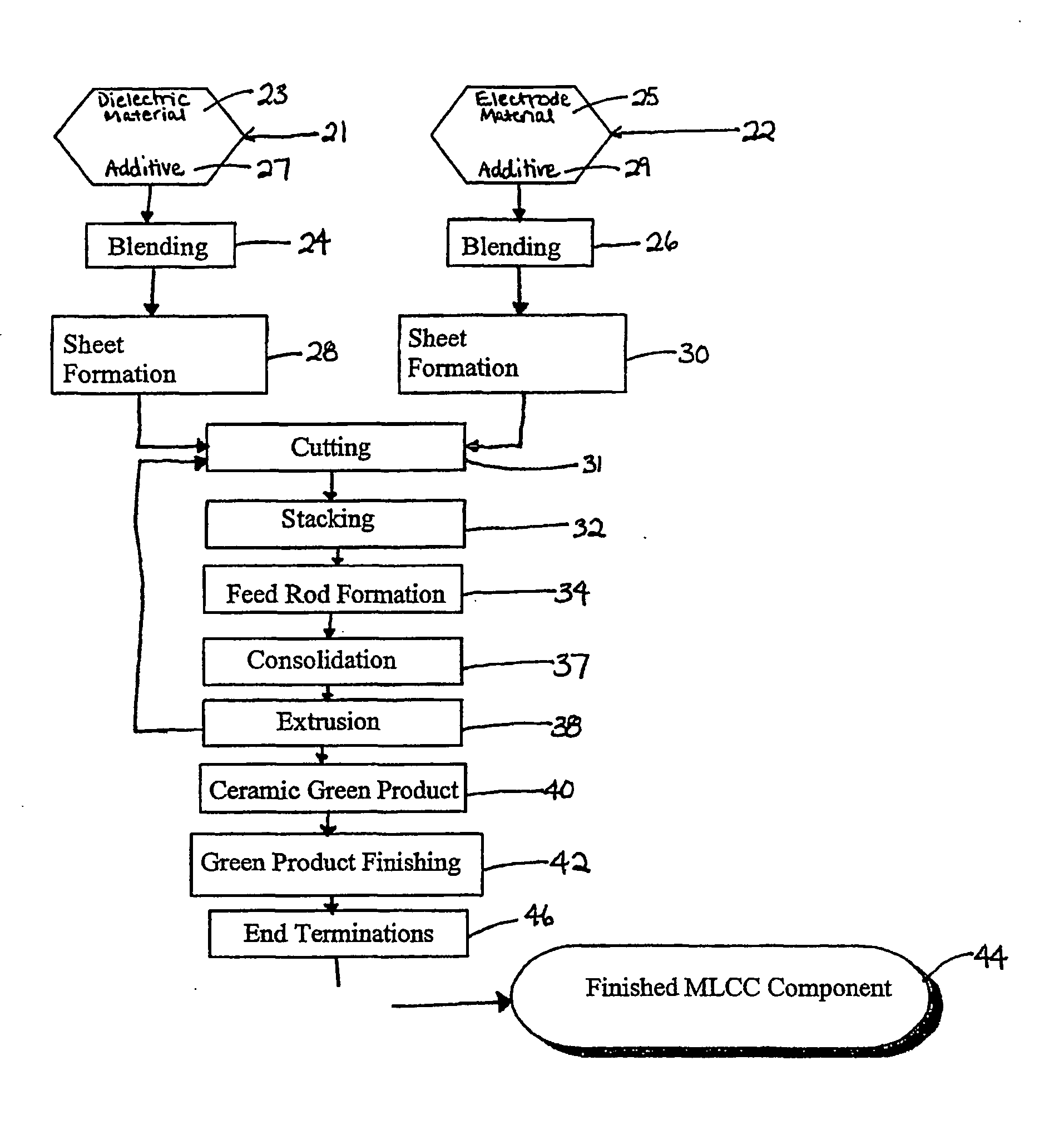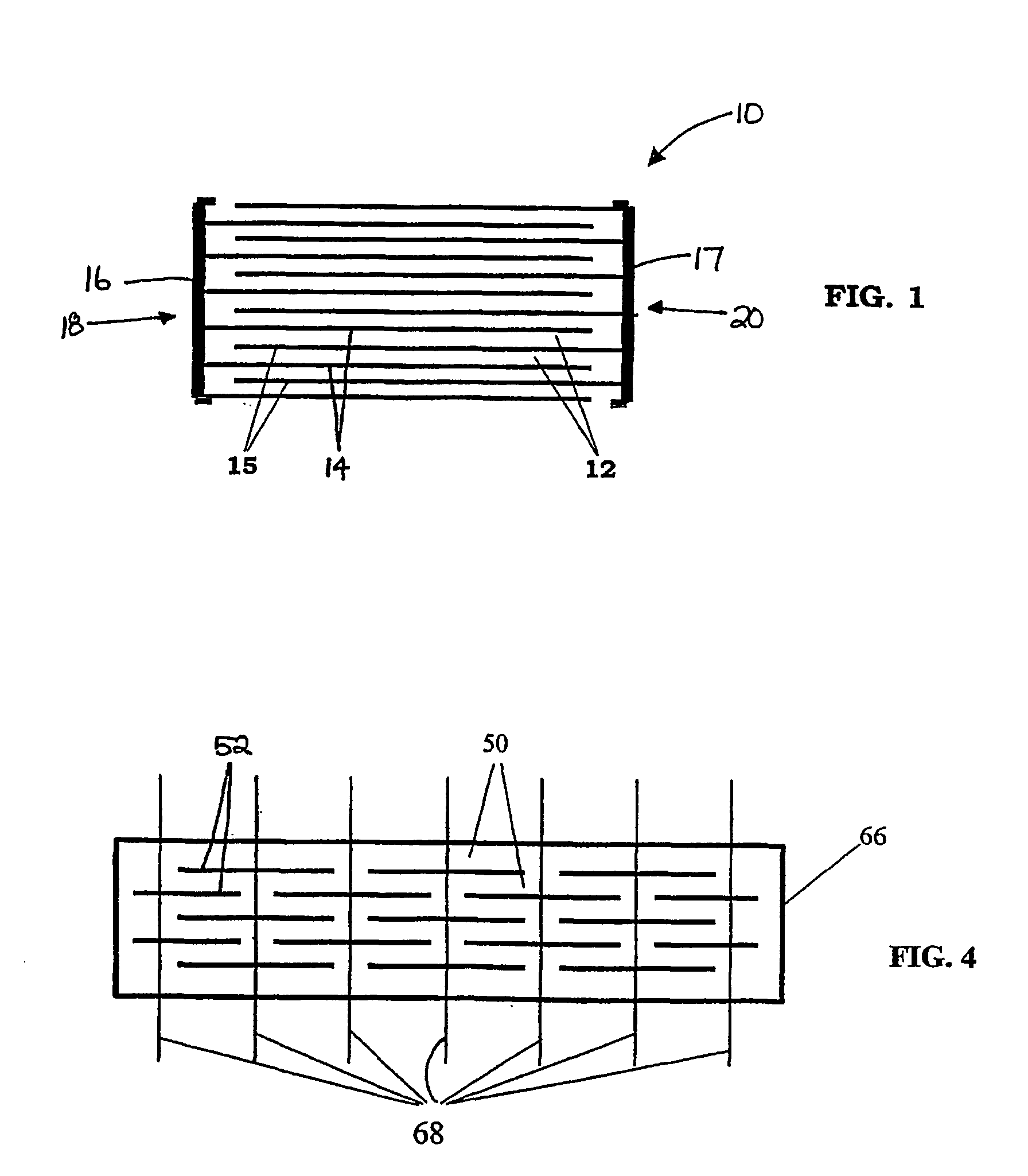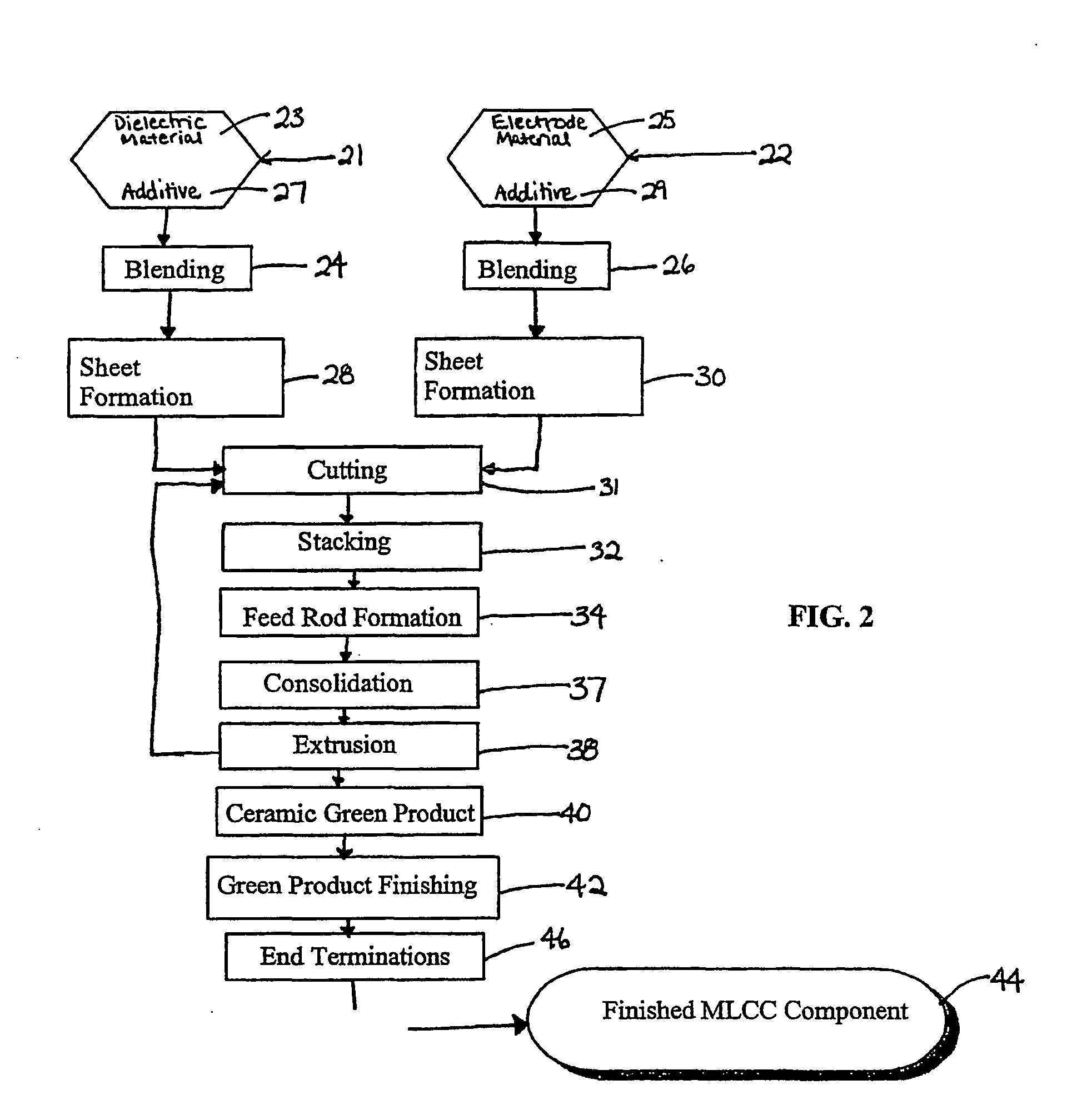Ceramic components having multilayered architectures and processes for manufacturing the same
a ceramic component and multi-layer technology, applied in the direction of metal layered products, synthetic resin layered products, electrical equipment, etc., can solve the problems of affecting the commercial success of the product, affecting the production efficiency of the product, and reducing the thickness of the tape, so as to achieve the desired mechanical strength and electrical properties, improve the durability and strength, and improve the effect of durability and strength
- Summary
- Abstract
- Description
- Claims
- Application Information
AI Technical Summary
Benefits of technology
Problems solved by technology
Method used
Image
Examples
example 1
[0038] Typical dielectric composite blends and electrode composite blends are set forth below in Tables 1 and 2, respectively.
TABLE 1MaterialDensity (g / cc)Volume %BaTiO315.8545-75EEA20.9315-50HMO30.881 0-10
1BaTiO3 powder available from TAM Ceramics, Inc. as Ticon HPB grade BaTiO3
3Heavy mineral oil
[0039] The batch size is 231 cc.
TABLE 2MaterialDensity (g / cc)Volume %Ni48.945-75EEA50.9325-50B-6761.06 0-10HMO70.881 0-20
4Nickel powder (<1 μm average particle size) available from Cerac, Inc.
6B-67 acryloid resin
7Heavy mineral oil
The batch size is 231 cc.
[0040] Barium titanate powders were purchased from TAM Ceramics, Inc. (grades Ticon TME and Ticon HPB of BaTiO3). The HPB grade has a slightly smaller particle size (D90=2.5 μm) and were used for the BaTiO3 batches in the multi-layer coextrusions. Nickel powder in the amount of 2.5 kg (less than 1 μm average) was purchased from Cerac, Inc.
example 2
[0041] This example illustrates a method of consolidating the “green” product (MLCC chips). The thermoplastic and plasticizer binder system (additives) is effectively removed through a bake-out period. The bake-out occurs over four days in a nitrogen atmosphere where a maximum temperature of about 600° C. is reached over the four-day cycle. The final temperature of 600° C. is reached during a ramp-up period during which the temperature is raised by about 0.1 to about 0.2° C. / minute.
example 3
[0042] This example illustrates a method of sintering the “green” product (MLCC chips) to densify the ceramic capacitor. When BaTiO3 as the dielectric material and Ni as the electrode material, the MLCC chips initially may be co-fired in a nitrogen atmosphere at approximately 1150° C. This temperature is incrementally increased in order to obtain denser dielectric layers. The final co-firing schedule consists of a ramp of approximately 2° C. / minute to approximately 1275° C. with an approximately 150 minute hold at this temperature.
PUM
| Property | Measurement | Unit |
|---|---|---|
| Fraction | aaaaa | aaaaa |
| Fraction | aaaaa | aaaaa |
| Fraction | aaaaa | aaaaa |
Abstract
Description
Claims
Application Information
 Login to View More
Login to View More - R&D
- Intellectual Property
- Life Sciences
- Materials
- Tech Scout
- Unparalleled Data Quality
- Higher Quality Content
- 60% Fewer Hallucinations
Browse by: Latest US Patents, China's latest patents, Technical Efficacy Thesaurus, Application Domain, Technology Topic, Popular Technical Reports.
© 2025 PatSnap. All rights reserved.Legal|Privacy policy|Modern Slavery Act Transparency Statement|Sitemap|About US| Contact US: help@patsnap.com



